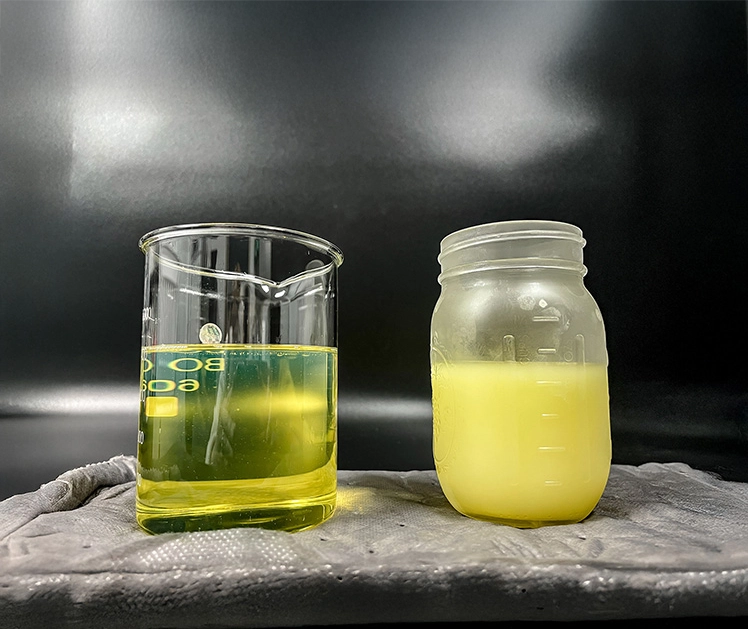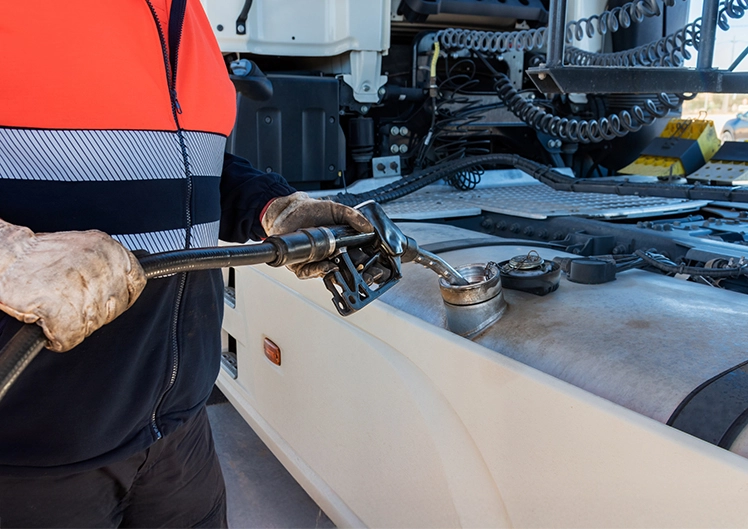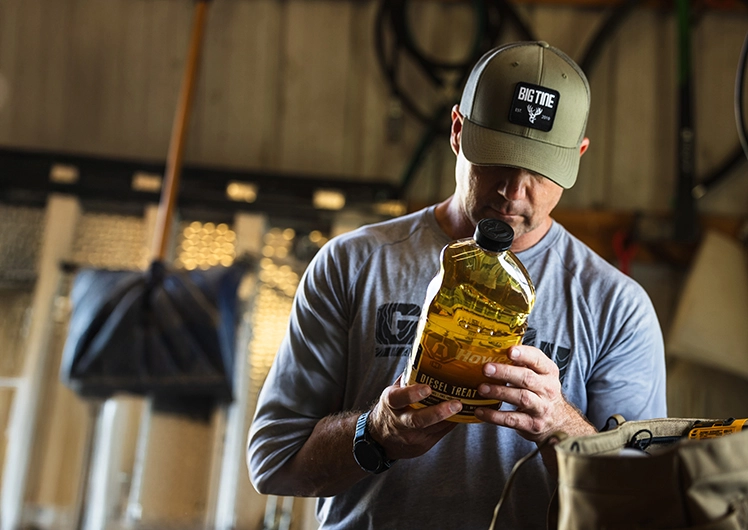
01/30/25
Anti-gel, Winter, Diesel Treat, Truckers
By Erika Howes
Diesel engines are built tough, and with proper care, they’ll last you for the long-haul. But the key is ‘proper care’. While regular maintenance on things like oil filters and coolant systems are routine for most savvy diesel truck owners, an anti-gelling routine can sometimes be overlooked.
Below, we’ll explore how and when to use diesel anti-gel. We’ll also touch on some pro tips for keeping your engine running smoothly all winter long.

Generally, diesel vehicles give you a bigger bang for your buck than those that run on regular gasoline. They offer great fuel efficiency and even greater towing power.
However, cold weather can bring challenges for diesel truck owners. In cold temperatures, typically around 10 – 15 degrees Fahrenheit, diesel fuel can begin to gel.

This is because diesel contains paraffin wax, which forms wax crystals when it begins to freeze. These wax crystals can begin to bind together at 32 degrees Fahrenheit. At this point, diesel fuel thickens and takes on a cloudy appearance (known as ‘cloud point’). If temperatures continue to drop, diesel eventually solidifies, turning into a gel instead of a liquid.
The exact gelling temperature depends on how much paraffin wax your diesel contains. The higher the paraffin content, the more likely diesel will gel at warmer temperatures. The amount of paraffin wax in diesel varies by blend and where it was purchased.
Gelled diesel can block your fuel filter, preventing your truck from running well – or even worse, from running at all. Fortunately, anti-gel additives are available for diesel fuel to stop this from happening.
Simply put, anti-gel works by decreasing the temperature at which diesel begins to crystallize. These easy-to-use additives prevent clogged engine systems caused by gelled diesel and keep your truck running smoothly.

Using an anti-gel additive is a preventive measure that stops your fuel from clouding or gelling. This means it should be added to your fuel tank before the fuel hits its cloud point. To ensure proper mixing, the anti-gel should be added to your diesel tank right before you fill it up with fuel.
The best time to start adding anti-gel to your tank is in warmer weather before temperatures drop below freezing. This minimizes the chance of an underperforming engine when cold weather hits.
Using an anti-gel every time you fill up your diesel truck at the station during cold weather months can help to effectively winterize your truck. Stock up with anti-gel to make it a part of your vehicle’s regular cold weather routine.
Exactly how much anti gel in diesel per gallon is needed to prevent fuel from gelling can vary based on temperature and your brand of anti-gel.

For example, if you’re using Howes Diesel Treat and the temperature is above 0 degrees Fahrenheit, you’ll only need 1 ounce of treatment for every 5 gallons of diesel. For temperatures below 0 degrees Fahrenheit, you would use 1 ounce of Howes Diesel Treat for every 2.5 gallons of diesel.
Other brands may recommend using a higher or lower amount of treatment per gallon, depending on their treatment rates and the temperature.
Ultimately, every brand of anti-gel comes with different guidelines. Carefully refer to the manufacturer’s instructions to determine how much product you’ll need. Also, keep in mind that ingredient quality can differ from brand to brand. With Howes Diesel Treat, overtreatment is not harmful. However, treating outside the guidelines with other brands may harm your engine, so reading and following directions is essential.
Lastly, remember that while windchill can be brutal on people, it does not affect diesel. Use real temperature only when calculating how much product to use based on temperature.
Anti-gel is easy and straightforward to use. But there are steps you can take to ensure you’re setting yourself up for success.

Gelled diesel can be saved with an emergency reliquefying product like Howes Diesel Lifeline. This type of product is specially designed to thaw diesel, working to reliquefy it before it damages your fuel system. If you live in a cold climate or travel from warm climates to cold ones, consider keeping a bottle with you at all times in case of emergencies.

Still, dealing with engine damage or other issues caused by gelled diesel can be costly and stressful. To avoid the pain of an emergency situation, use a diesel fuel anti-gel additive just before the winter temperatures set in and consistently throughout the colder months.
Below, we’ll explore some of the most commonly asked questions on anti-gels for diesel trucks.
You need diesel anti-gel anytime you may be facing freezing temperatures. For the best results, begin using it before winter or a cold spell. Pour the anti-gel into your diesel tank right before you fill up.
Use anti-gel every time you fill up throughout the winter.
Yes, you should always use anti-gel in your diesel truck if the temperature is or is predicted to drop below 32 degrees Fahrenheit. Otherwise, you may not be able to start your truck and even risk expensive engine damage. Diesel was not built for cold temperatures. It is crucial to take precautions.
Overtreating with an anti-gel can lead to engine clogging or efficiency problems and, depending on the brand, could even void warranties. Still, using just a little more than the recommended amount should not cause issues. Pay attention to the directions on each product’s label.
Overusing anti-gel tends to happen in the winter when drivers try to overcompensate. Monitor your fuel carefully and always follow the directions and recommended guidelines. While overtreating with Howes Diesel Treat is never harmful, that may not be the case with every anti-gel.